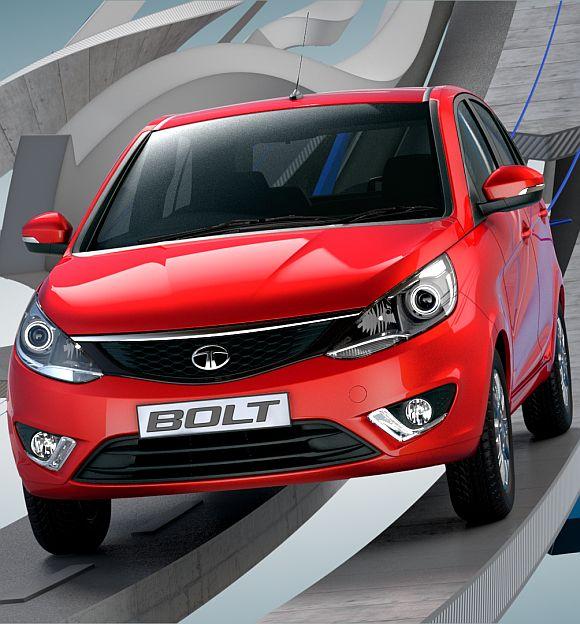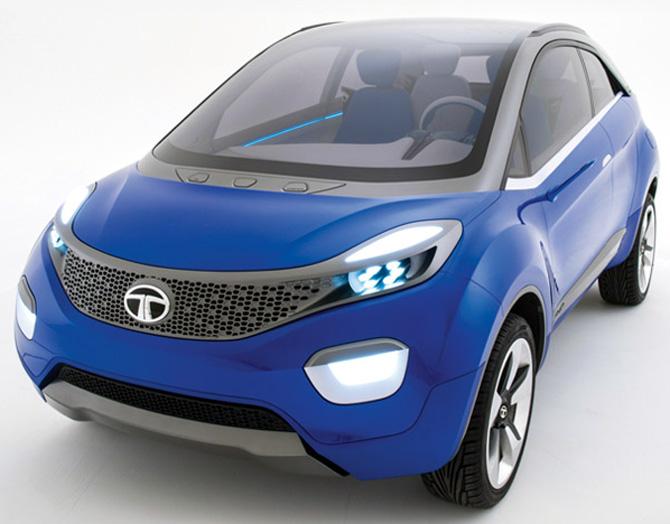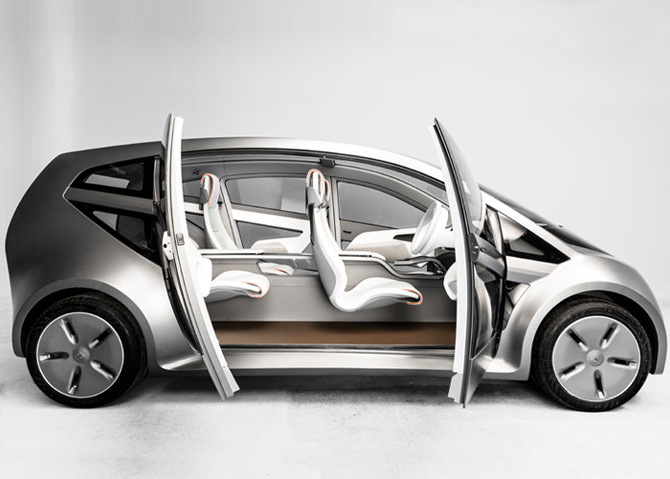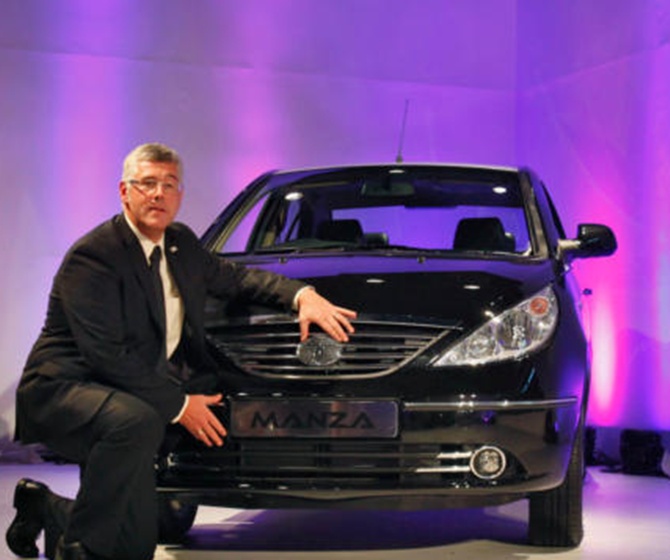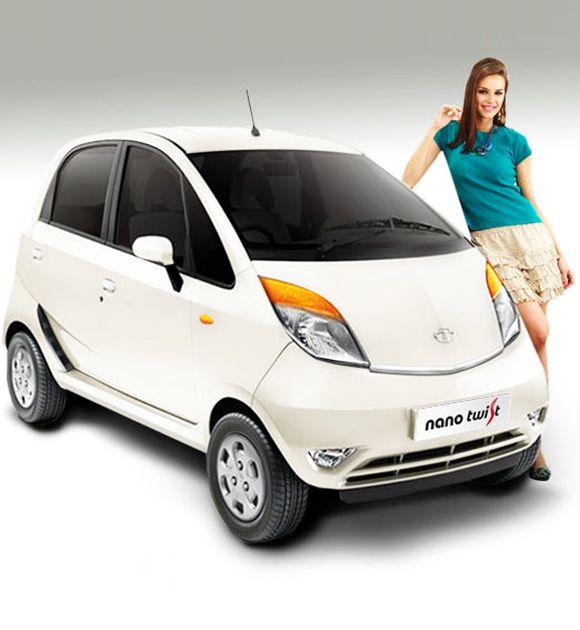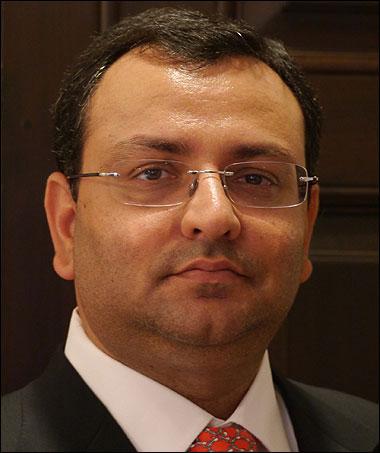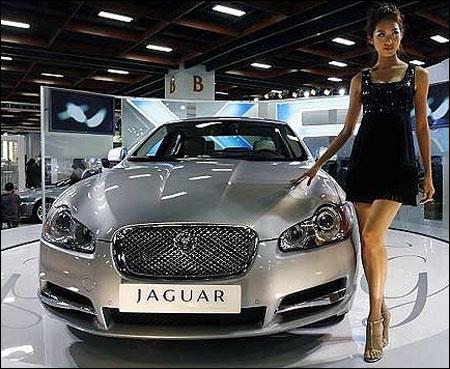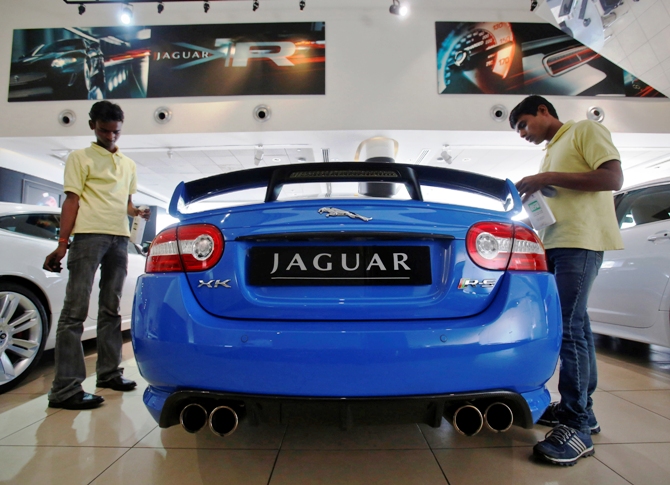 | « Back to article | Print this article |
What went wrong with Tata Motors?
The company whose sales slumped 37 per cent in the nine months to December hopes to stem the tide with a slew of launches starting with the Zest and Bolt.
When Tata Motors unveiled two new cars, the Zest and Bolt, at the Auto Expo in Greater Noida last month, it sent out a signal to rivals: it may have been dislodged by Mahindra & Mahindra as the topmost maker of sports utility vehicles (SUVs), it may have been relegated to the fifth spot in the overall car market (after Maruti Suzuki, Hyundai, Mahindra & Mahindra and Honda), its small car, the Nano, may have fallen short on sales expectations, and it may not have launched a new product in four years, but it wasn't yet time to write it off.
For a large part of the past decade, Tata Motors had remained a mute spectator as rivals launched new cars, split segments, added features and, in the process, snatched market share from it.
Click NEXT to read more...
What went wrong with Tata Motors?
Tata Motors lost six percentage points in market share in the last four years. Its current market share of 8.5 per cent is the worst in recent years.
Its sales slumped 37 per cent in the nine months to December, the steepest in the industry. (Overall, the market slid 6 per cent.) In 2012-13, Tata Motors saw a decline of 15 per cent in sales.
What went wrong? The recent success of Renault, Honda and Nissan clearly shows that innovation is the key to survival. With the Zest sedan and Bolt hatchback, Tata Motors aims to break into this league.
Click NEXT to read more...
What went wrong with Tata Motors?
The two cars, says Tata Motors President (passenger vehicle business unit) Ranjit Yadav, are a "result of extensive market research and (customer) understanding, which has helped (the company) give the most fitting product for the customers' need".
Their launch will take place in the second half of the year. The Zest will compete against top-selling compact sedans like Honda's Amaze and Maruti Suzuki's Dzire, while the Bolt will fight for space against Hyundai's Grand i10, i20 and Maruti Suzuki's Swift.
Is the effort behind the cars enough? Till date, they have not been test-driven; so, nobody knows about their ride quality. But some analysts feel the company may have got it right this time.
Click NEXT to read more...
What went wrong with Tata Motors?
A recent report by rating agency Moody's Investor Services said: "These products possibly mark the turning point and are certainly the most tangible results to date of Tata Motor's Horizonext strategy and its design innovations that should make the offering more attractive to new consumers".
Goldman Sachs is also sanguine about the company's strategy. It reiterated a buy on Tata Motors stock on Tuesday. Tata Motors executives disclose that these cars will have features that are not available in other "volume" cars of the company: projector headlamps, daytime running lights, LED tail lamps, automatic transmission et cetera.
The key, of course, will be the price. The company wants to announce the price closer to the launch. But Yadav acknowledges that the pricing will be aggressive: "The cars will undoubtedly be priced to offer terrific value for money with best-in-class features."
Click NEXT to read more...
What went wrong with Tata Motors?
Gearing up for global competition
The bigger question is, how can Tata Motors survive the onslaught of global car majors?
Tata Motors has said that its product pipeline till 2020 has been finalised and will comprise two new launches every year.
While the company has been tight-lipped, sources say the lineup includes a compact SUV, a multi-utility vehicle, and variants of the Nano.
Abdul Majeed, partner and executive director, PricewaterhouseCoopers India, says: "If you have the right product combination even in the most difficult times you will win.
The Renault Duster and Ford EcoSport are the best examples of this as they found buyers even in a slowing market. It's absolutely doable for a company like Tata Motors. The Japanese and Korean car makers have gone through a tough time too."
Click NEXT to read more...
What went wrong with Tata Motors?
The challenge for the management will be to stick to the launch schedule. Incessant delays in the past have led to a loss of excitement in the Tata Motors brand.
The Safari Storme, for instance, was scheduled for launch in 2007-08 but hit the roads only in late 2012. For arch rival Mahindra & Mahindra, it provided a window big enough to push its Scorpio which is now the largest selling SUV in India.
The new course for Tata Motors was being charted by Karl Slym, who had been handpicked by Ratan Tata, the former chairman, as the managing director.
The Englishman tragically jumped to his death from a hotel in Bangkok in January, bringing his 15-month stint with Tata Motors to an abrupt halt.
Slym was regarded as the most dynamic leader to have worked with the company after Sumant Moolgaonkar and Carl-Peter Forster.
Click NEXT to read more...
What went wrong with Tata Motors?
He knew that the average age of cars at Tata Motors was one of the highest in the industry. Manufacturing and product development processes were age-old. To correct the situation, Slym had brought in the change Tata Motors desperately required.
"Slym encouraged us to think beyond the ordinary, irrespective of the position Tata Motors had in the market. His vision, the psychological and tangible changes he brought on board were very helpful," says an executive who worked with Slym on the Nano.
Repositioning of the Nano, a troubled project for the company, was taken up personally by Slym. From a cheap car, the Nano was repositioned as a "city car" to match the aspirational meters of buyers.
Click NEXT to read more...
What went wrong with Tata Motors?
On the way up
Under Slym, the rollout frequency, an aspect which had brought disrepute to Tata Motors in the past, improved tremendously. Tata Motors was quick to respond to market needs as is evident from the experiments tried on the Nano.
A CNG version, a power steering version, repositioning of the brand, all kicked in the space of a few months. It refurbished its ageing brands Sumo, Indigo and Indica and gave them a renewed push after kick starting the HorizonNext campaign last year.
To reduce dependence on Fiat for engines, Tata Motors last month unveiled its first litre-class, indigenously produced engine in 15 years.
Click NEXT to read more...
What went wrong with Tata Motors?
Cyrus Mistry, the current chairman of Tata Motors, will have to ensure that the new man at the helm carries forward Slym's vision for the company.
Tata Motors has set up a nine-member steering committee headed by Mistry that will carry forward the strategy devised by Slym and look after the key aspects of operations.
Mistry will also chair the new product design and engineering review meetings. Mistry will have to marshal all his resources because the market is getting tougher by the day. "We see a fairly difficult environment and we expect the market to remain stressed. We are in for a few difficult quarters in front of us; it would be a choppy ride," says Yadav.
Clearly, Tata Motors will have to keep making investments if it wants to regain its lost glory, the recent losses notwithstanding. It posted a standalone operational loss of Rs 1,200 crore in the December quarter (the biggest quarterly loss ever).
Click NEXT to read more...
What went wrong with Tata Motors?
This was the fifth straight loss-making quarter for the company. "The management plans to invest Rs 3,000 crore every year over the next three years and a major portion of this will be utilised towards developing new products for the passenger car business," a report from broking firm Angel Broking stated.
At least three-fourths of Tata Motors standalone revenue is generated by commercial vehicles and the rest by passenger vehicles.
Though the company sells one in every two commercial vehicles sold in the country, it is heavily dependent on the profit-making operations of Jaguar Land Rover, the two brands it acquired in 2008 from Ford Motor Company, for its consolidated profits.
Click NEXT to read more...
What went wrong with Tata Motors?
GROWTH ENGINES
JAGUAR LAND ROVER
* Tata Motors entire profit in the December quarter came from Jaguar and Land Rover
* The two English brands have been driving profit at Tata Motors for eight quarters
* Range Rover Sport, Range Rover, Jaguar F-Type, to name a few, have become the best-selling cars with waiting periods extending to several weeks.
* The two brands will see their highest capital expenditure of up to £3.75 billion next financial year
* In addition to those in China and India, the company is building another plant in Brazil
COMMERCIAL VEHICLES
* Tata Motors has 52 per cent market share of the segment
* It has been nimble at acknowledging changes in consumer behaviour and delivering newer products
* However, market share has been hit by aggressive play by Volvo-Eicher combine and the entry of German giant Daimler
* In the nine months to December, sales fell 25 per cent to 243,160 units
* It is developing a range of products which will be launched this year
